Sign up for daily news updates from CleanTechnica on email. Or follow us on Google News!
Recently the EU’s Joint Research Centre released an assessment of efforts related to hydrogen for transportation. In it, they make the remarkable statement that fuel cell vehicles can’t compete with battery-electric vehicles and then ask for more money to help fuel cell vehicles keep going.
“Both FCEVs and FCEBs face competition from battery electric alternatives, which benefit from lower operational costs and advancements in technology.”
Projects funded since 2008 to the tune of €1.2 billion haven’t been able to overcome reliability issues of vehicles and refueling stations, or reduce the cost of low-carbon hydrogen much at all, while battery-electric vehicles have proven to be more reliable, cheaper, and fit for purpose. An honest appraisal would have said something like Okay, batteries won, let’s close this hydrogen for transportation thread down. Instead, it asks for enhanced financial support, expanded infrastructure from the public purse, and money for pro-hydrogen propaganda.
The report is the Historical Analysis of Clean Hydrogen JU Fuel Cell Electric Vehicles, Buses and Refuelling Infrastructure Projects: Evaluation of Contribution towards the State of the Art. Like a lot of the reports I’ve reviewed where hydrogen is involved as a transportation fuel in the past months, the cognitive dissonance bakes off of it like steam.
Think I’m kidding about the €1.2 billion since 2008?
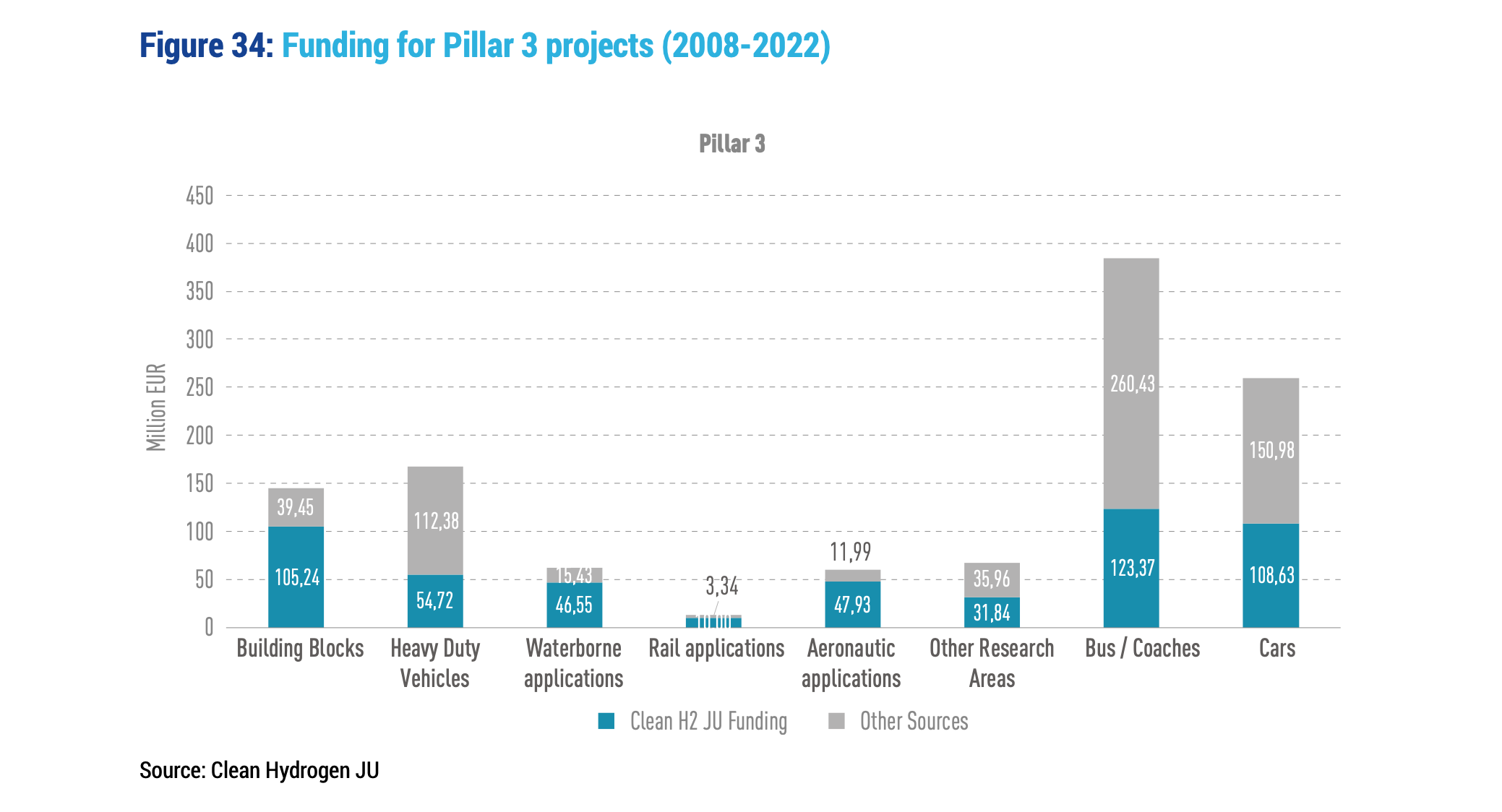
Let’s get one thing out of the way. Every penny spent on fuel cell cars was completely wasted. Over a quarter of a billion euros flushed down the drain. The market has collapsed to the point where Toyota and Hyundai are practically giving away new cars with 60% discounts and free hydrogen refueling and still finding no takers. This has been obvious for years, yet funding for hydrogen taxi programs and light vehicle refueling stations continues.
That’s not the funding perspective in the JRC recommendation for more money, by the way. Their numbers come out much lower, to a cumulative €240 million per page 8 of the recent report. No, the big numbers come from the EU’s Clean Hydrogen Joint Undertaking 2023 program review report.
What’s the Clean Hydrogen Joint Undertaking? It’s the renamed version of the Fuel Cells and Hydrogen Joint Undertaking one and two. Why they renamed it is an interesting question, as they didn’t appear to have changed its mandate in the process. That mandate doesn’t include subsidies to compete with battery-electric vehicles unless you squint, cross your eyes and hit yourself in the forehead with a frozen haddock.
2. It shall, in particular aim to:
(a) reduce the production cost of fuel cell systems to be used in transport applications, while increasing their lifetime to levels which can compete with conventional technologies,
(b) increase the electrical efficiency and the durability of the different fuel cells used for power production to levels which can compete with conventional technologies, while reducing costs,
Those conventional technologies would be diesel, LNG, and CNG, not battery-electric. Yet it’s battery-electric transportation that the JRC points at as the competition. Accurately, of course, as battery-electric vehicles are lapping fuel cell vehicles by every measure.
What organizations make it a joint undertaking? The three members are the European Union, represented by the European Commission, the fuel cell and hydrogen industries represented by Hydrogen Europe, and the research community represented by Hydrogen Europe Research.
Ah. Two out of three of the major groups are explicitly ones that are pushing hydrogen uphill. That explains the odd conclusion and the begging for money. Without hydrogen for transportation being a thing, these people have to find real jobs.
Is there anything else interesting from the assessment report showing what the EU has received for its €1.2 billion? There certainly is.
Reliability concerns were implied all over the document, as multiple programs are trying to make fuel cell drivetrains and refueling station reliability increase to the point where it’s remotely useful.
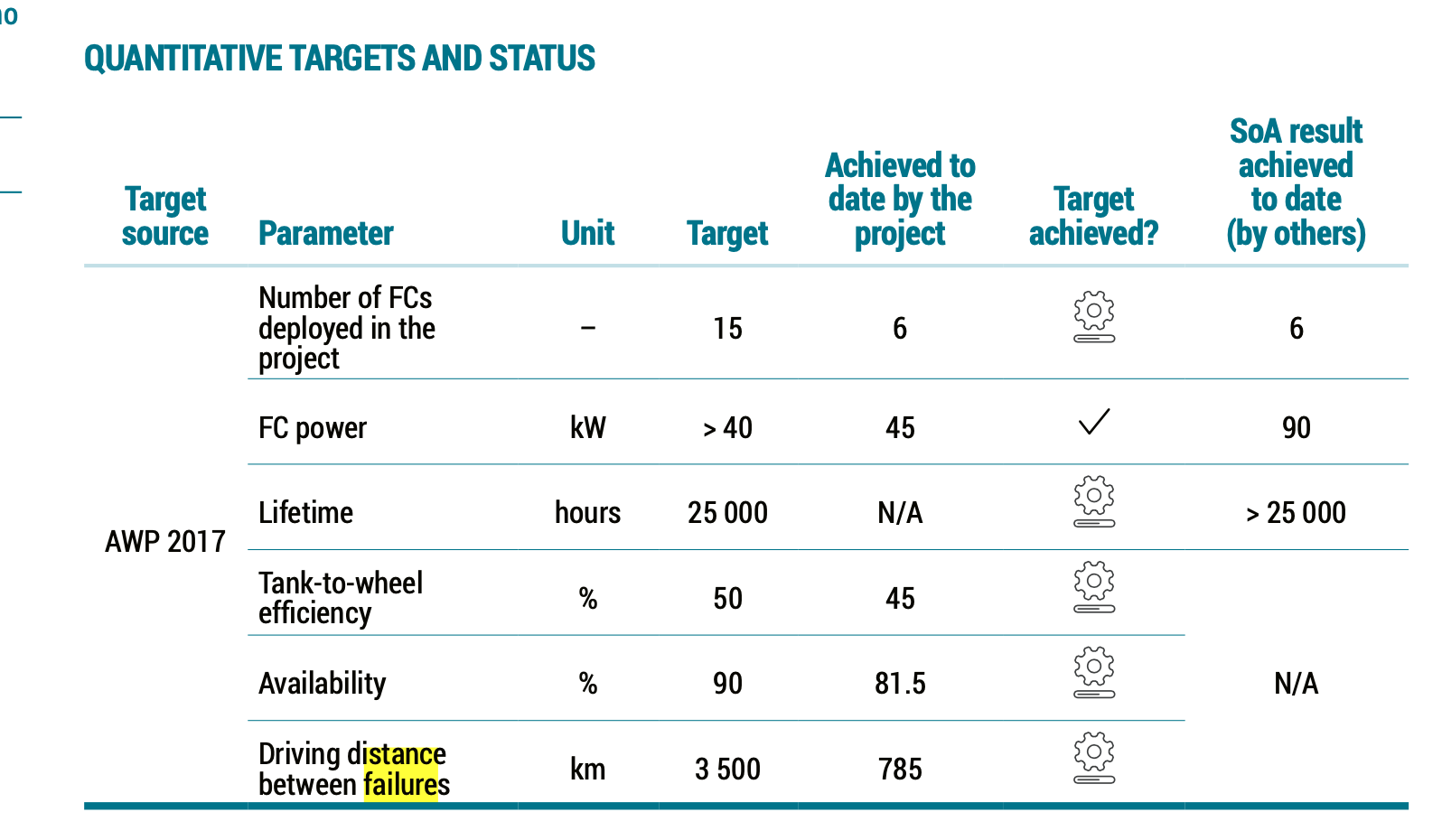
This assessment data from a hydrogen garbage truck program is fascinating. Their target was being able to drive 3,500 kilometers before a fuel cell drivetrain failure — an absurdly low number — and they failed miserably in achieving it, only getting to 785 km. That’s well under two weeks of driving for garbage trucks.
The report has this pithy line:
“In transport applications, a cost of around 5 €/kg at the pump must be achieved for cost parity with conventional fuels.”
Current gray hydrogen refueling stations in Europe are pumping dirt cheap gray hydrogen at a cost of €15-€25 right now. Before that, pump prices were a bit closer to €10 for the cheapest hydrogen possible.
As BCG reported recently, it’s unlikely that green hydrogen will be able to be manufactured in scaled industrial electrolysis facilities for that cost, asserting a range of €5-€8 in 2030, and my assertion is that it will be in the upper part of that range. Given that the 2023 average green hydrogen contract cost point was €9.49 and the economics are not going to change fundamentally, getting the delivered, stored, compressed, cleansed, and dispensed retail cost of low-carbon hydrogen down to €5 should be a very big red flag.
Does the review say We can’t get there from here, so let’s stop pretending we can? No, no it doesn’t. But it should. Does the report say Battery-electric drive trains are already well under that price point for energy so we should give up on hydrogen? No, no it doesn’t. But it should.
3EMOTION has deployed all 29 FCBs: 10 buses in London, 6 in Rotterdam and the South Holland province, 7 in Versailles, 3 in Pau and 3 in Aalborg, demonstrating the operability of buses from 4 different manufacturers with 2 different fuel cells systems. The buses of in some sites of 3EMOTION met the targets on Hydrogen Consumption (average of 8 kg H2/100 km), Warranty Time (15 000 h) and Bus Cost (< 850 000 EUR).
3EMOTION is one of the program’s funding ventures. Across 29 fuel cell buses, over 10% of all the fuel cell buses in Europe at the time, so likely a representative sample, only some had achieved 20-month warranties and costs that don’t make eyeballs bleed.
Note that Yutong battery-electric buses cost under €400,000 and have 8-year warranties. Leading European electric bus maker Solaris sells its electric buses with five years of maintenance for €650,000. There’s a very good reason that there are ten times as many battery-electric buses on European roads than fuel cell buses despite the vast sums of money the EU keeps throwing at hydrogen.
Does the review say Hydrogen buses are vastly more expensive and much less reliable than battery-electric buses so we should stop funding them? No, no it doesn’t. But it should.
The goals for the €32 million H2HAUL-funded initiative are a mixture of very ambitious and ludicrously low.
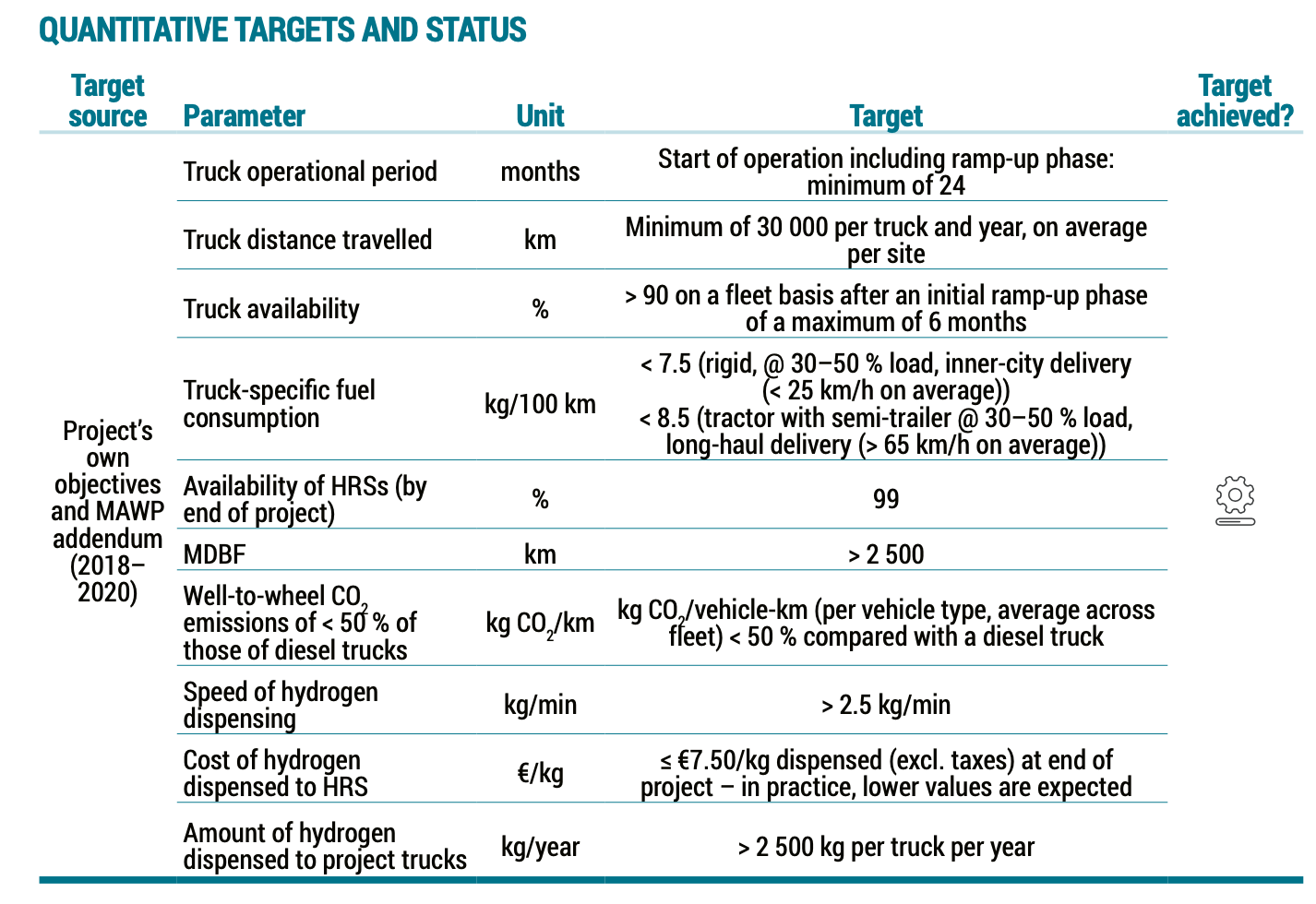
99% hydrogen refueling station uptime target? Yet empirical data from California’s light vehicle and bus refueling stations is that they are out of service, mostly with compressor failures, more hours than they pump hydrogen. That’s a target that’s not even remotely going to be met. While the JRC report is supposed to include data on hydrogen refueling stations, it’s completely silent on maintenance costs for them.
A cost point of dispensing of hydrogen, exclusive of taxes, of €7.50? The H2HAUL site is very coy about whether it will be pumping gray or green hydrogen. They are going to be disappointed on this target as well.
16 trucks and four refueling stations for €32 million? The same numbers of battery-electric trucks and megawatt-scale chargers would be perhaps €12 million if they were gold-plated.
A kg/C02 target only 50% better than a diesel truck? When full lifecycle battery-electric trucks are 40% that of diesel and heading downward rapidly as the grid and supply chains decarbonize?
Mean distance between failure greater than 2,500 km? That’s under 3 days driving. This is for longer haul trucks remember. Really? They hope to be better than completely unacceptable?
Does the JRC report have anything to say about vehicle reliability?
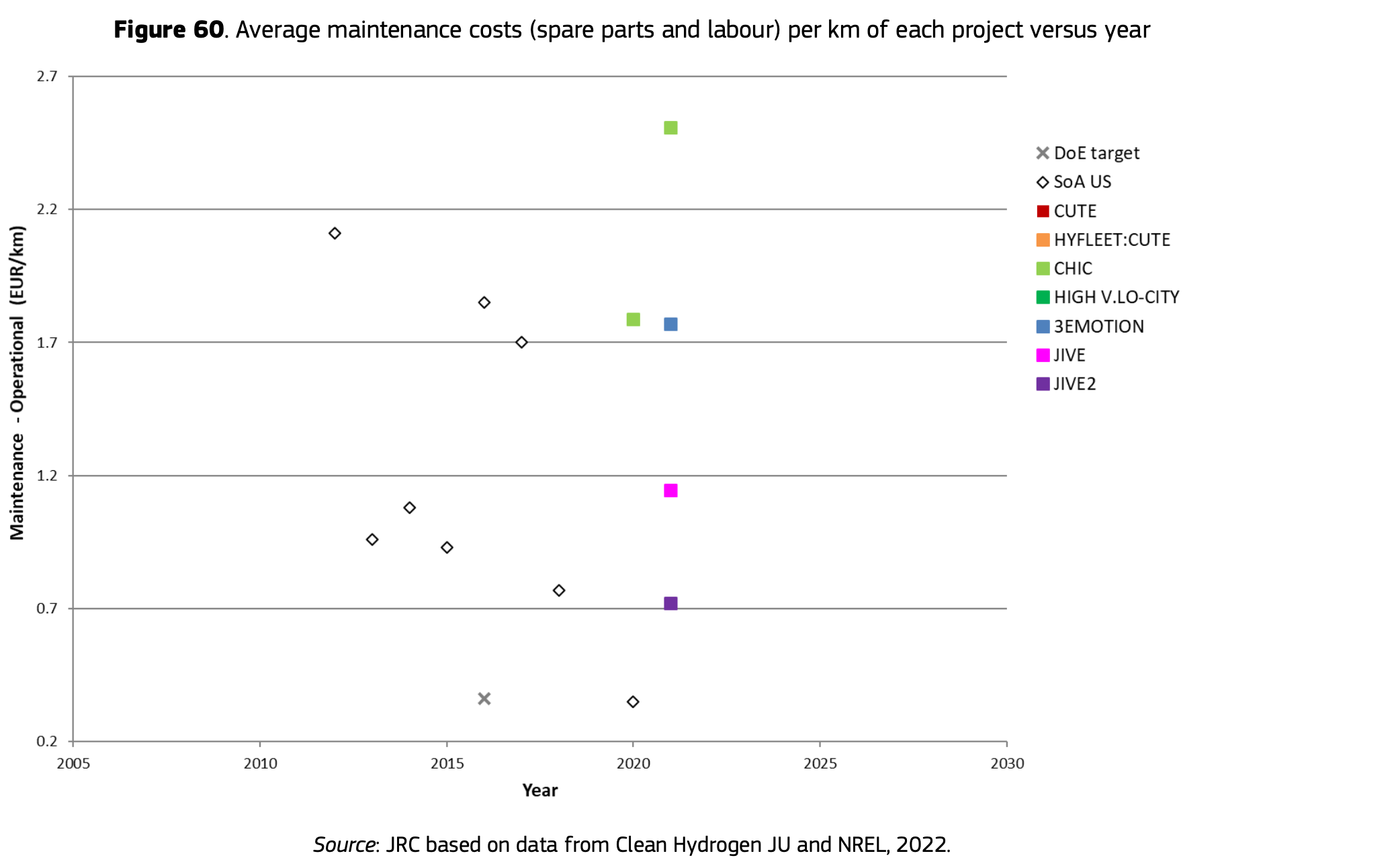
Yes, yes it does, although the JRC report is remarkably optimistic about what this abysmal record shows. Why abysmal? Find the little x on the chart. That’s the target of about €0.40 per kilometer for maintenance and operation. Note that virtually all of the fleets were vastly above that. The JRC asserts that this shows that maintenance costs have decreased over the years, but that’s not remotely a trend visible from the data.
It does clearly support the data I found from California’s bus fleets of an average of 50% higher than diesel bus maintenance costs, empirical data which the total cost of ownership for heavy duty cycle vehicles continues to ignore. I was unable to find a report that provided an exactly equivalent value for the JRC chart as maintenance costs for diesel buses include complete engine overhauls every seven years, something that wasn’t within the data JRC gathered for fuel cell buses as none have survived that long.
 Chip in a few dollars a month to help support independent cleantech coverage that helps to accelerate the cleantech revolution!
Chip in a few dollars a month to help support independent cleantech coverage that helps to accelerate the cleantech revolution!
The H2ME 2 hydrogen mobility project results reported in the Clean Hydrogen JU review caught my eye. They were claiming 98% hydrogen refueling station availability, something that contradicts all of the empirical and anecdotal data I’ve been assessing for a handful of months from multiple countries.
My initial assessment of California’s light vehicle refueling stations found that they were out of service 2,000 more hours than they were pumping hydrogen, a 20% greater downtime than usage, and costs if projected to high volume usage would be potentially 30% of capital expenditure per year. I’ve recommended to European researchers that they revisit this with a formal report and more than napkin sketch methodology and math to determine a more appropriate number than the 3% to 4% that are commonly found in total cost of ownership studies.
That seemed high, so I went to the H2ME 2 home page to look at detailed reports on the results.
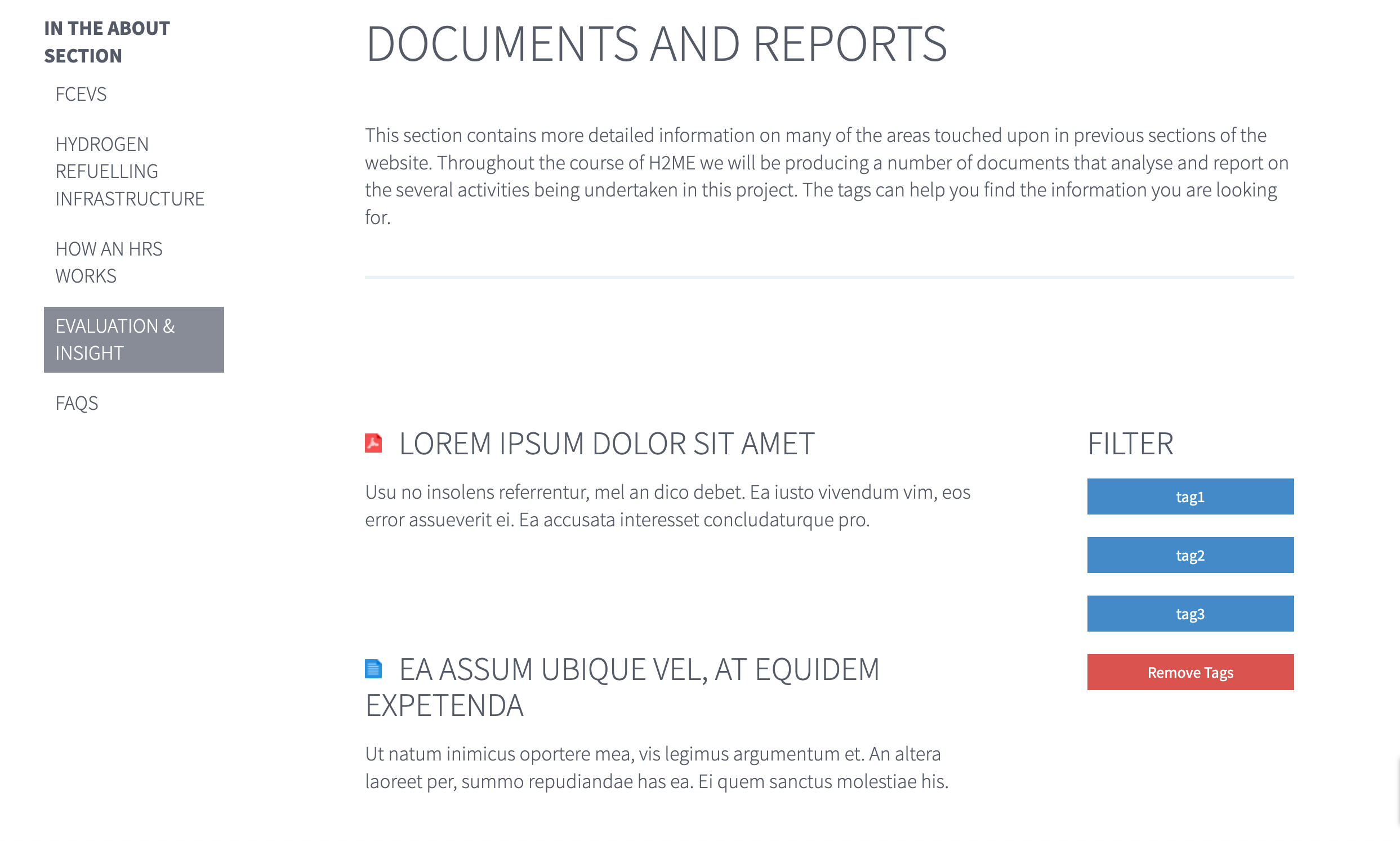
Errm… LOREM IPSUM DOLOR SIT AMET is placeholder text used in application and web development until real text can be provided.
In the absence of any supporting data for the H2ME claims in the overall document as well as the absence of any quantification of refueling station reliability in the JRC document, my assessment that hydrogen refueling stations are empirically unreliable is not moved. If anyone has actual results from H2ME 2 to share, I’d appreciate seeing them. At present I consider the 98% to be unsupported and unsupportable give the compressor failures California was seeing.
The IMMORTAL program for durability of fuel cells in heavy duty trucks has interesting results as well.
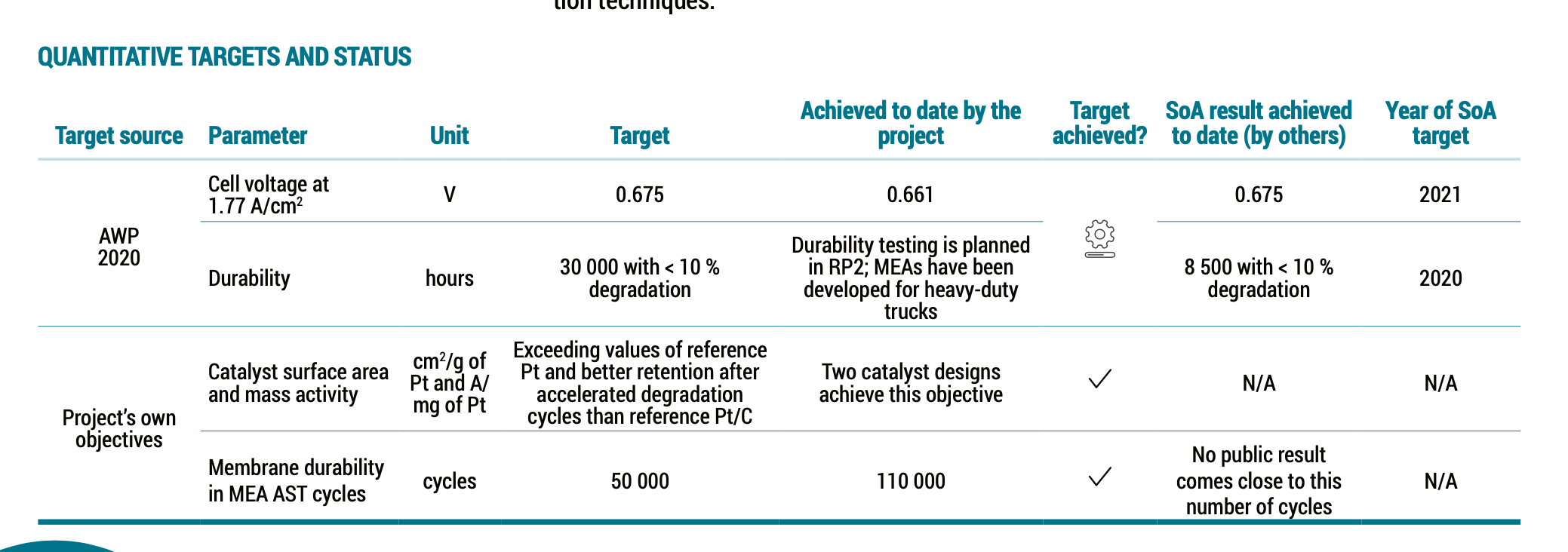
Note the 8,500 hours with 10% degradation. That’s barely more than a quarter of target.
That’s only two years with a 12-hour day for the truck, assuming more drivers for the fleet of course. That’s probably full replacement in four years at significant expense.
Note also that their membrane durability results in the lab test bench conditions are not replicated in real world conditions: “No public result comes close to this number of cycles.” And yes, I went to the IMMORTAL website and confirmed it was laboratory only.
This is lab TRL4 or 5 stuff. It may never be fit for on-road, urban air fuel cell applications.
The JIVE program is pushing fuel cell buses. It started in 2017, seven years ago. It has delivered no quantitative results against its targets except achieving a capex under €650,000 on at least some of the buses.
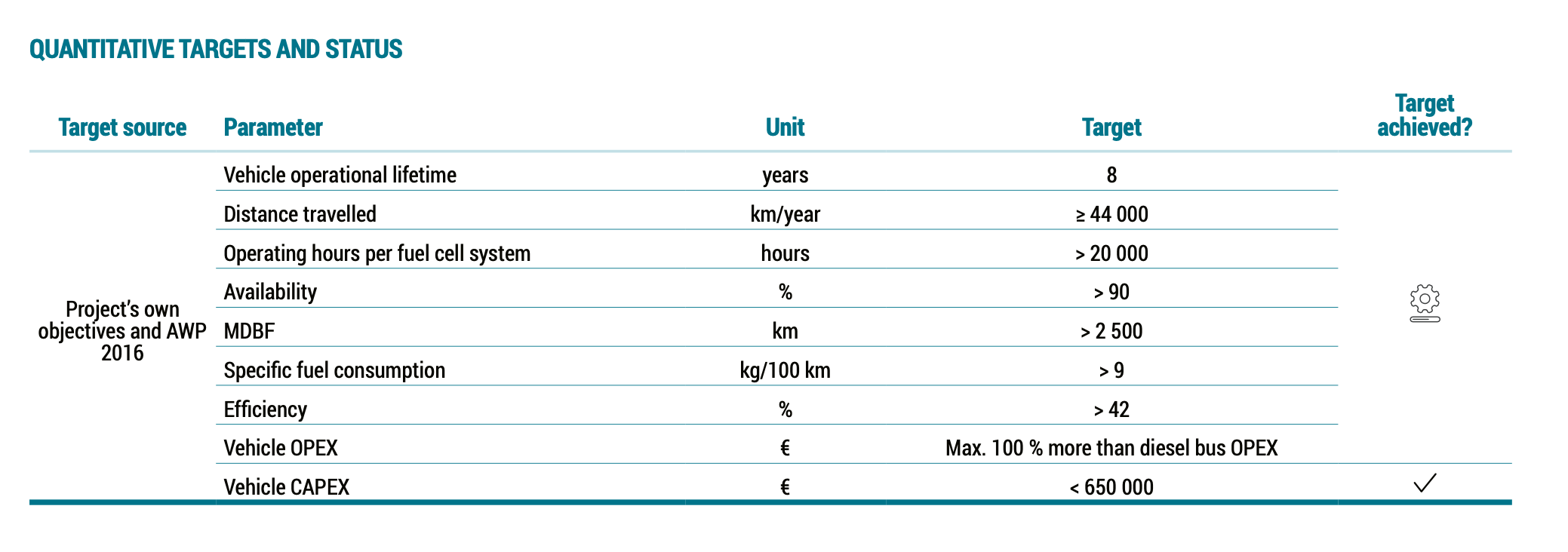
It’s funded to the tune of €89 million across 8 locations. That presumes 8 hydrogen refueling stations to go with the 142 buses.
They could have put three times the number of battery-electric buses in 24 locations for €89 million.
And once again, seven years later, zero results from the program on availability. And once again, only 2,500 kilometers driven between failure is the incredibly low bar that’s been established. Transit buses average about 130 km of driving per day, so the goal is to be better than having them out of service every 19 days, or almost 20 times a year.
Diesel bus data suggests 11,000 km is the baseline. Data from battery-electric buses are mixed as startups like Proterra delivered crappy products, but they are vastly better than the targets for fuel cell buses already, and in many reports delivering on the promise of being lower maintenance than diesel buses, with a great deal more of issues related to ancillaries like doors than drivetrains.
Then there are the maritime shipping, trains, and aviation efforts, which are dead in the water, on the tracks, and on the runway. Zero quantitative results from those initiatives, but €130 million thrown at them nonetheless.
What does this all add up to?
The JRC and the 2023 Clean Hydrogen JU reports are litanies of expensive failures, lack of progress in making hydrogen fit for purpose, and money pits for EU taxpayer money. Any inclusion of battery-electric options in comparisons leads to the conclusion that the JRC made, that batteries are better in every way.
The conclusions, if they weren’t being written by organizations which are so committed to hydrogen that they can no longer recognize flashing red warning lights or hear 110 decibel sirens, should be that the EU should stop funding hydrogen for transportation efforts because it doesn’t work. Instead, they ask for even more money and support.
Have a tip for CleanTechnica? Want to advertise? Want to suggest a guest for our CleanTech Talk podcast? Contact us here.
Latest CleanTechnica TV Video
CleanTechnica uses affiliate links. See our policy here.


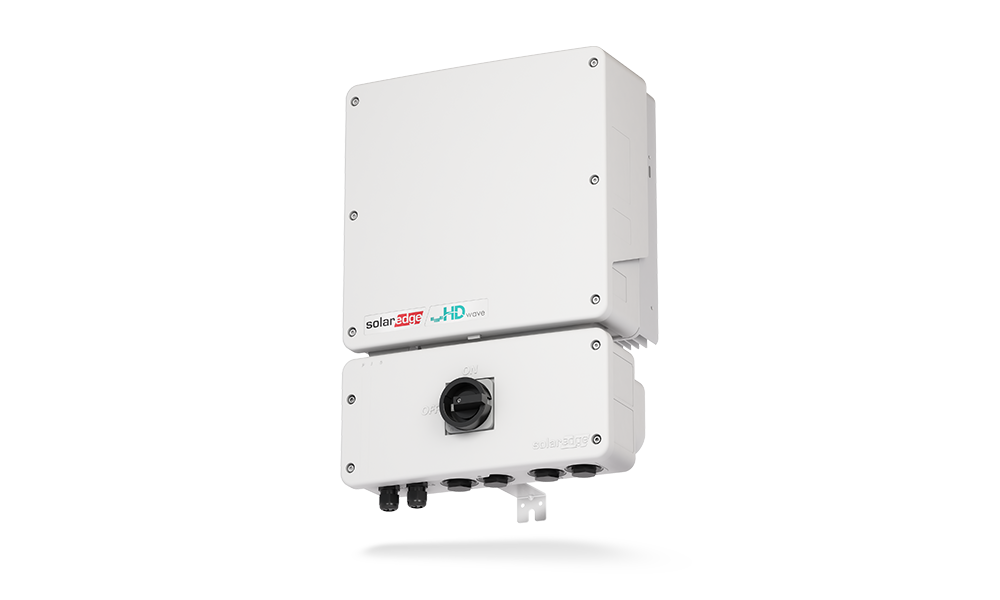

.jpg)
